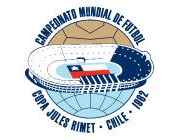Tournament Overview

In 1962 the FIFA World Cup moved back to South America, though this might not have happened at all were it not for a massive mobilisation by the organisers following a massive earthquake that had taken place two years earlier. Known as the Valvidia earthquake, it had measured 9.5 on the moment magnitude scale – the most powerful ever recorded. Thousands were either killed or made homeless, and tsunamis raged across the Pacific, one of which killed sixty-one people in Hawaii. At this point the World Cup would have been the last thing on anyone’s mind, but rebuilding work eventually commenced – driven by the president of the organisational committee, Carlos Dittborn.
Amazingly, everything was rebuilt in record time, and the tournament kicked off two years earlier without a hitch. Dittborn sadly died months before he could see his dream realised, but his achievements were a great source of honour for the Chilean people. The stadium in Arica, which hosted one set of group matches and the quarter-final between the hosts and the USSR, was named after him.
The tournament itself was essentially the same as it had been four years earlier in Sweden – sixteen teams divided into four groups of four, with the top two in each group advancing to the quarter-final phase. The one improvement on 1958 was that Goal Average was used as the first tie-break method, alleviating the need for the schedule-disrupting play-off.
From 30th May to 17th June 1962 a total of thirty-two matches were played, which produced eighty-nine goals at an average of 2.78. While Germany finally found itself exiting the tournament quietly at the quarter-final stage, the trophy was retained by Brazil, who beat Czechoslovakia 3-1 in the final in Santiago. The two teams had also met in the group phase, playing out a goalless draw.
Qualifying Campaign and pre-tournament build-up
While the rest of Europe was gradually seeing the rise of professionalism over the course of the 1950s, the DFB staunchly held onto their amateur status. Amazingly, when the Nationalmannschaft won the World Cup in 1954 the feat was achieved with a totally amateur team – Germany was one of the few countries in Western Europe without a professional league; while the Football League had been in existence for the best part of a century, their German counterparts were still having to keep regular jobs. Even the technically amateur players of the Eastern Bloc countries were amateur in all but name – supported by the state and provided with well-run training and playing facilities, they were in many ways more professional than their western counterparts.
The qualifying campaign for Chile 1962 looked to have been something of a breeze with their having won all four of their games, but in truth things were a lot closer with three of the games being won by the one goal. Between the end of the qualification round and the finals the Mannschaft only played one warm-up match, where they beat fellow finalists Uruguay 3-0 in Hamburg.
Germany’s Tournament in brief
The success of the German team in 1954 – and to a lesser extent in 1958 when they reached the semi-finals – provided ample justification for the DFB’s position on professionalism: it was a simple case of not wanting to fix something that wasn’t broken. 1962 was to change all that, as a tired German side bereft of ideas limped out at the quarter-final stage.
The first phase saw Herberger’s team put together three solid if unspectacular results: a goalless draw against Italy, a come-from-behind victory against Switzerland, and a workmanlike 2-0 win over the hosts Chile. The quarter-final – which pitted the Mannschaft against Yugoslavia for the third last-eight fixture in three tournaments – saw the Yugoslavs get some measure of revenge for their previous two defeats, as they won the game in the last five minutes to set up a semi-final encounter with Czechoslovakia.
Although he stayed in the job for a further two years before handing over the reigns to his assistant Helmut Schön, it was disappointingly ordinary end to what had at times been a extraordinary career for Nationaltrainer Herberger. The team he had taken to Chile in 1962 were neither good nor bad, but simply stagnant; it was becoming increasingly evident that tactical nouse and mental strength alone were not going to allow them to keep up with their professional rivals.
By the time of the next World Cup in England in 1966, a new professional league – the Bundesliga – had been established.
Germany Tournament Squad List »
Germany Tournament Results and Overview »
